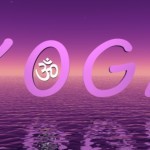 By Dr. Paul Jerard, E-RYT 500, YACEP
By Dr. Paul Jerard, E-RYT 500, YACEP
A Moon Salutation, Lunar Flow, or Chandra Namaskar, is the opposite of a Sun Salutation. Where the Sun Salutation brings heat and energy into the body, the Moon Salutation brings calm and relaxation. The Lunar Flow provides a counter-balance to the Sun Salutation and is often done at the end of an evening Yoga asana session. Moon Salutations are often practiced at night – when you want to unwind after a long day. The calming results of practice have created enthusiastic fans.
Purpose of the Lunar Flow
A Lunar Flow honors the feminine energy within the body, as opposed to the masculine nature of a Sun Salutation. Both men and women can perform Moon Salutations and Sun Salutations, of course. They help shift the energy within the body, providing balance and calm to the mind and body. They can help uncover inner qualities – such as wisdom, creativity, and intelligence. Chandra Namaskar can open the path toward inner calm and balance the mind and body. The purpose of Moon Salutations is to bring the practitioner’s attention inward to the ebbs and flows of the breath and the moon’s phases. The movement and breath work together to help ground the body and calm the mind.
Traditional or Modern
Although Moon Salutations can be practiced throughout the month, some Yoga practitioners believe that practicing them under a full moon can be particularly powerful. However, in some traditions, Yoga is not practiced during a full or new moon, keeping these as sacred days of rest. Many teachers have modern approaches, which revolve around the theme of the class. As a result, Moon Salutations can be part of a class regardless of the lunar calendar.
Variations
There are several variations of Chandra Namaskar. It is a series of flowing poses where the body moves fluidly with each deep inhale and exhale. For the following variation, begin in Mountain pose, then transition to a Crescent Moon side bend, then Goddess pose, Star pose, Triangle pose, Head to Knee pose, Lunge, Squat, Lunge on the opposite side, Head to Knee with the opposite leg, and complete the series by performing the poses in the reverse order, until you are back to Mountain pose.
Timing and Pace
Remember to breathe deeply and slowly with each new pose. This sets a much slower pace than most flowing asana sequences. Focus on your breath while bringing inner calm and peace into the mind and body. You may repeat Moon Salutations as often as you want, but four rounds should be the maximum if you intend to sleep. It may be useful to practice stage-by-stage relaxation after you have finished your asana session.
Calming Option
If you prefer a more calming option for the start of the day, you might even try Moon Salutations in the morning. This is not a traditional approach, but it is up to individuals to decide when they feel a Moon Salutation would benefit them the most. Yoga instructors teaching a group of students, who want to release stress, will probably benefit the class most by performing the Moon Salutation after warming up and at the beginning of an evening asana session to send students away feeling calm and centered.
Benefits of Moon Salutations
Moon salutations are a type of hatha yoga that is said to have many health benefits. Some of these benefits are included below.
Gentle Way for Warming Up
Increasing Flexibility
Improving Balance and Coordination
Building Strength
Promoting Better Circulation
Aiding in Digestion
Helping to Regulate the Nervous System
When Should I Practice?
Moon Salutations can be performed at any time of day. Still, they are particularly beneficial when practiced two hours before bedtime. This is because they help calm the mind and body, promoting a night of restful sleep. There is no wrong time to practice. However, some people prefer to do them during the night or early morning when the moon is visible. Others like to do them during the day when the sun is shining. There are also different schools of thought on how often to practice Lunar Flows. Some people believe it is best to do them every day, while others think that once a week is sufficient. Ultimately, it is up to you to decide what works best for you.
© Copyright – Aura Wellness Center – Publications Division
Please visit the following link to see our online Yoga teacher training courses.
https://aurawellnesscenter.com/store/
Are you interested in Meditation Teacher Training?
Click here to see our online Yoga Nidra teacher training course.
Are you an experienced teacher looking for YACEP credits or continuing education?
Subscribe to Our Newsletter for Special Discounts and New Products
Related Resources
52 Essential Principles of Yoga Philosophy to Deepen your Practice
by Rina Jakubowicz.
A Relaxing Way to De-stress, Re-energize, and Find Balance
by: Gail Boorstein Grossman.
YOGA: THE PATH TO HOLISTIC HEALTH
by B.K.S. Iyengar
TEACHING YOGA: Essential Foundations and Techniques

Moon Salutations help to shift the energy within the body, providing balance and calm to the mind and body. Really its cool. Thanks for sharing this good article.
Moon Salutation can help us to uncover our inner qualities, Its also can open up the path toward inner calm and provide balance to the mind and body. Nice sharing!
How many rounds of moon saluation to be practised each day.
It depends on what you want to accomplish. If the purpose is to warm-up, 3-12 rounds is a good start.